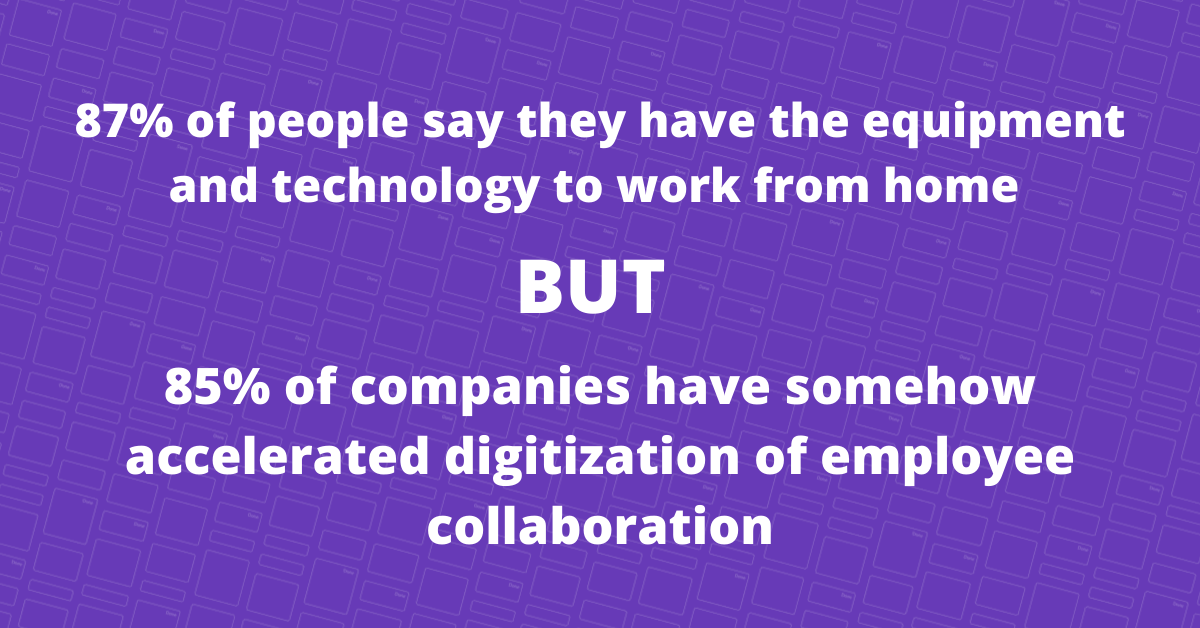How do you collaborate with a remote team?
Collaborating with a remote team is no longer a unique experience. More than a year of the COVID-19 pandemic, and it has become a norm. So, how do you collaborate effectively? A short list of the necessities would be:
- transparent and defined work schedule
- remote team collaboration software
- defined communication channels
- clear and realistic deadlines
- culture of trust
Let’s talk about each in detail.
For some of us, remote working has turned out to be a better option, while others are struggling with it. However, both groups need the same to be as productive as they would have been in the office. Here are the five most essential things you need to incorporate into your team to maintain a high level of efficiency.

1. Transparent and defined work schedule
The main concern in all types of work is availability. Do your team members need to be available and at work simultaneously? If that’s not crucial for your work, why not give them the option to decide when they want to work? It shouldn’t involve changing their schedules at the last minute, but rather give them the freedom to select their working hours. You will need to start with these simple questions for each of them:
- What are their defined working hours they guarantee they are working and available for an urgent call?
- When do everyone’s working hours overlap, and is this overlapping enough for all necessary team meetings, etc.?
- Is it acceptable to call your team members without scheduling the call in advance?
Having this information, you will create your team schedule. Your team members will be aware of the hours they can reach out to a particular person for a one-on-one discussion, as well as the hours reserved for team meetings. It may sound like something very challenging to manage, but in most cases, team members are willing to adjust their working hours to make them suitable for the whole team.
2. Remote team collaboration software
So, you have your team schedule. Now, consider the best tools you have to facilitate collaboration. It’s beneficial that you have a variety of online applications available for your team to utilize across different areas of work. Even before the pandemic started, it was probably the case that you did most of your work using online tools.
What is remote team collaboration software?
The surveys showed that the majority of people who had to work from home found it somewhat easy to have all the necessary software that they needed for work. However, easy doesn’t mean efficient. A McKinsey survey showed that 85% of companies have somehow accelerated the digitization of employee collaboration

Companies are turning from traditional approaches to more flexible and agile ones. In terms of technologies as well. On average, each company has a stack of at least 10 digital tools that its workers use daily, including Gmail, apps for video calls, data storage, text, and data processing tools such as Word, Excel, or Google Spreadsheets and Docs. Though there’s no question of why we need online collaboration tools, the question is which tool will be the best for my team.
Kanbanchi will suit the needs of Google Workspace users because it’s integrated with the Google ecosystem and lives inside your Google Drive.
3. Defined communication channels
Your team should agree on the main communication channel from the very beginning. If you agree, it will eliminate misunderstanding in the future. You might want to use your collaboration software as the priority channel
At the same time, don’t avoid using different communication means when it’s appropriate. For example, when you need something done urgently, it is hardly effective to send an email and expect a prompt reply. Using instant messenger will be much better in this case. However, don’t forget that messengers take their leading place among the disturbing factors at work; use them carefully.
We won’t pass by the topic of calls and video calls. It’s essential to establish a rule for video calls to avoid becoming overwhelmed with them. It’s also very important to know who on your team would not be comfortable with just having a call in the middle of the workday. Notify this person in advance and ask for the best time for a call.
4. Clear and realistic deadlines
Setting clear expectations in advance works out well in any area of life, not only at work. Your entire collaboration process will go smoothly if you start with a proper foundation. Deadlines might be the most dreadful things for one and something that drives the force of the other. In both cases, you need to identify them clearly. Just as you know that goals should be S.M.A.R.T. (Specific, Measurable, Achievable, Relevant, and Time-bound), the deadlines should be as well. There’s no sense in a deadline for building a house that comes in a week, or a deadline to make the report “whenever it is needed”.
5. Culture of trust
All that has been said above is only possible when you have developed a culture of trust within your team. Then you will surely know that everyone is working towards the team goals, not against them. Such a culture is not something that’s built in a day or two, but it’s worth it. Transparency in communications and leadership helps to build such a culture. Even the tools you use may help to develop it or ruin it. For example, if you use remote team collaboration software that is flexible and supports everyone’s input, you are building a culture of trust.
Try Kanbanchi as the remote team collaboration software
Using the right apps, you can collaborate efficiently. Our platform is designed to support various types of businesses, offering flexibility, agility, and an intuitive user experience. Start now and build your best corporate culture with effective collaboration.
More articles about Remote Work here
